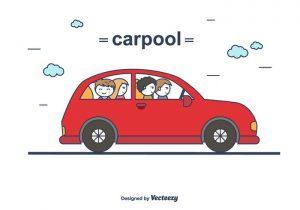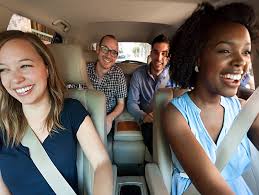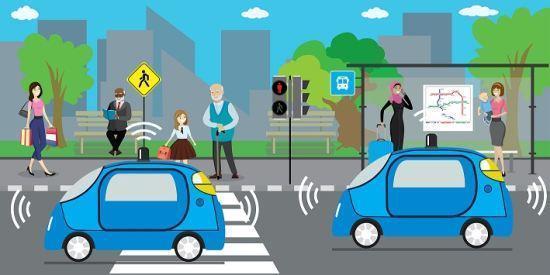By Haden Kirkpatrick, Esurance
The idea of “access vs. ownership” has recently become a major trend that impacts consumer models across categories.
According to marketing strategists, Gen Y, Gen Z and even some Gen X consumers are foregoing the American consumerism model in favor of “access” or “partial access” models. In other words, they’re reducing the things they own in favor of experiences like travel.
Nowhere is this dynamic more impactful than in the future of car ownership. Ridesharing companies like Uber and Lyft are already changing traditional transportation paradigms around the world, and fractional or access-based solutions like GetAround and Turo are changing the nature vehicle ownership and car access.
This trend will accelerate as driverless vehicles shift from car ownership to a ride-hailing model. Absorbing the upfront purchase costs and ongoing maintenance of a car you only drive five percent of the time loses appeal in an environment where door-to-door service is available in the palm of your hand.
Recent research from Esurance estimates that families could save $4,146 annually just by using fleet-owned autonomous vehicles instead of owning their own cars.
The shifting consumer trends, combined with the technological innovations, are turning heads in America’s biggest industries. Auto behemoths Ford and General Motors are already tapping the ridesharing space as part of their self-driving initiatives, and Google’s Waymo plans to roll out their robo-taxi service in Phoenix later this year.

While traditional car ownership won’t immediately go away, the trend toward fleet-owned, self-driving cars will only continue to increase.
Your two-car family in the ’burbs may opt for one car, say, and urban one-car homes may get rid of them altogether.
This is a boon for your wallet and a win for the environment — and our wellbeing. On top of saving time, fuel, insurance premiums and high blood pressure (fewer cars means less traffic), here are some of the ways the future of ride-hailing can help shrink our eco-footprint.
Roadway infrastructure has long been designed to address this trend, engineering roads and highways to account for human behavior and safety at the lowest common denominator.
Hence, wide enough lanes, rumble strips, medians and guardrails — plus street signs, highway signs, traffic lights and sound buffers are all elements of transportation that will be relegated to the past.
Remove human error from the mix, and these buffers are no longer needed. Highways can be streamlined with narrower roads unobstructed by guardrails, medians and traffic lights, and all that space can be repurposed as parks and bike lanes.
But the most significant change of all: removing parking structures. The cars’ ability to park themselves outside of dense areas may be most impactful. Again, freed-up space could be restored to pedestrian infill (like parks, walkways and trees) or even affordable housing. What were once city blocks choked by concrete could be transformed into tree-lined boulevards.
Think about it this way: L.A. County’s parking infrastructure uses up 14 percent of the city’s space. Imagine if all that space were suddenly relinquished for reuse.
Reduced Emissions
A RethinkX study found that, in a fully-autonomous world, “each car will be used at least 10 times more than individually owned cars,” which means far fewer vehicles will be required for a fleet.
And fewer vehicles mean reduced pollution. According to a 2017 study by University of California, Davis, if self-driving cars are electric and shared, greenhouse gas emissions could be reduced by a whopping 80 percent by 2050.
Will Our Eco-Footprint Get Worse Before it Gets Better?
There’s a glaring caveat, however. That same UC Davis study points out that if carpooling doesn’t take off as expected, greenhouse gases could go up in the meantime. The main concern is that driverless cars could increase our tolerance for distance traveled, which significantly increases pollution.

If people are willing to travel further away, then housing developments may flourish in remote areas.
That’s a win for affordable housing, but a loss for our eco-footprint.
Also troubling is the possibility of “zombie” cars on the road — that is, cars driving without passengers, doing things like picking up groceries and running errands.
And unless a pricing system is in place which accounts for negative externalities (like carbon taxes or other fuel consumption charges), passengers may not be inclined to travel with others or rideshare.
Chip manufacturers are aware of this issue. Nvidia, just announced an artificial intelligence chip that they say “crams $10,000 worth of power into a tiny box that costs just $1,299.”
What would otherwise need 1,000 watts to run trillions of operations now only uses 30 watts, and the brightest minds in the world are already working on new technology to get to “reversible” or “zero-energy” computing.
Like all innovations, there are side effects – both positive and negative.
For example, we’ve seen tremendous benefits from the automobile, as well as its unintended side effects. Cars have made traveling remarkably convenient, but they also spurred urban sprawl and caused pollution.
But nonetheless, fewer people have been getting their drivers licenses since 1983. One of the main the reasons for this is — you guessed it — the cost of owning and maintaining a car when you can easily get rides from others.
It’s not difficult to fathom how self-driving cars can spur that trend exponentially. To get there, however, we need proper oversight, and the onus is ultimately on us as consumers to make smart choices for ourselves and our planet.















